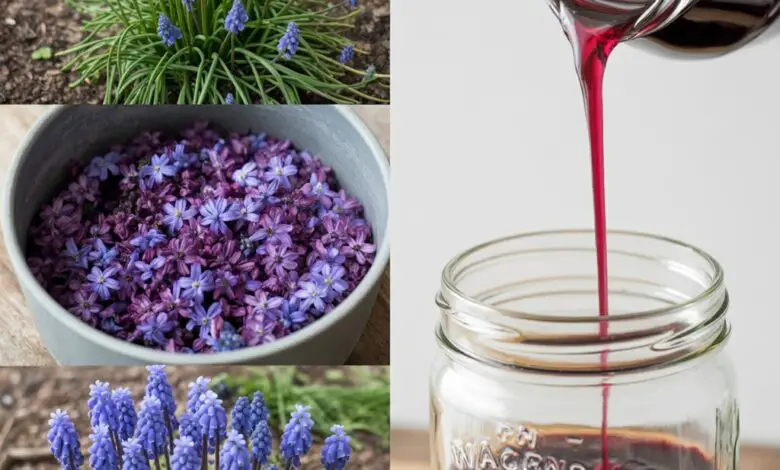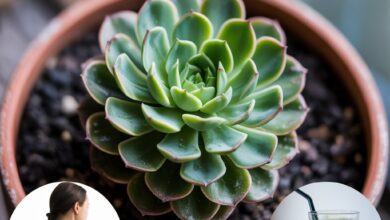Grape Hyacinth (Muscari): A Tiny Spring Wonder with Surprising Benefits and Uses

As spring arrives, grape hyacinths make their entrance in a dazzling display — carpeting lawns and gardens with clusters of vibrant blue or purple blooms. While many admire them for their ornamental charm, few realize these delicate flowers have a rich history of traditional uses and surprising health-related benefits. Let’s take a closer look at what makes the Muscari genus more than just a pretty face in the garden.
What Are Grape Hyacinths?
Grape hyacinths (Muscari species) are perennial bulb plants native to the Mediterranean region and parts of Asia. Named for their resemblance to tiny bunches of grapes, these flowers grow on short stalks and are often mistaken for true hyacinths. However, they’re more closely related to other spring bloomers like squill and lily of the valley.

Traditional Uses and Natural Remedies
While today they’re mostly enjoyed as decorative plants, grape hyacinths — especially Muscari comosum (also known as the tassel hyacinth) — have long been used in folk medicine:
1. Digestive Aid
In traditional Mediterranean medicine, the bulbs of certain Muscari species were cooked and eaten to support digestion. They were believed to have gentle laxative effects and help stimulate the digestive system.
2. Natural Detox and Diuretic
Boiled grape hyacinth bulbs were also consumed for their diuretic properties, aiding kidney function and helping flush excess fluids. In rural Greek and Italian communities, they were sometimes included in spring detox routines to refresh the body after winter.
3. Soothing Inflammation
Some early herbalists recommended infusions or poultices made from the plant for their mild anti-inflammatory benefits. Though not widely studied today, these traditional practices hint at the plant’s broader therapeutic potential.
⚠️ Important Note: While Muscari comosum has been used in traditional dishes (often sautéed or pickled), not all grape hyacinths are safe to eat. Always correctly identify the species, and never consume ornamental varieties or plants treated with chemicals. When in doubt, consult a trusted herbalist or field guide.
More Than Just Medicinal: Garden and Ecological Perks
Grape hyacinths offer more than just historical herbal uses — they’re a gardener’s friend and a boon for the environment:
4. Early Blooms for Pollinators
These flowers bloom early in the season, providing essential nectar to bees and other pollinators when little else is available. By planting them, you help support local ecosystems and encourage biodiversity.
5. Low-Maintenance Ground Cover
Grape hyacinths spread easily, forming dense mats that naturally suppress weeds. They thrive in a variety of soil conditions and require minimal upkeep — perfect for creating a colorful, resilient ground cover.
Creative Uses at Home
If you’re feeling inspired, there are a few creative ways to bring grape hyacinths into your life:
- In the Garden: Plant them under trees, along pathways, or in combination with tulips and daffodils for a vibrant, multi-layered spring display.
- As a Natural Dye: The flowers’ blue pigment can be used to dye fabric, wool, or paper. Just note that the color may fade over time unless treated with a fixative.
- Symbolic Touches: In the language of flowers, grape hyacinths symbolize rebirth, trust, and sincerity — making them a beautiful addition to spring bouquets or seasonal rituals.

Though small in size, grape hyacinths are rich in beauty, history, and ecological value. Whether you’re drawn to their vibrant color, their role in herbal traditions, or their ability to attract pollinators, Muscari is a timeless springtime favorite that deserves a place in every garden — and perhaps a little more recognition beyond it.




